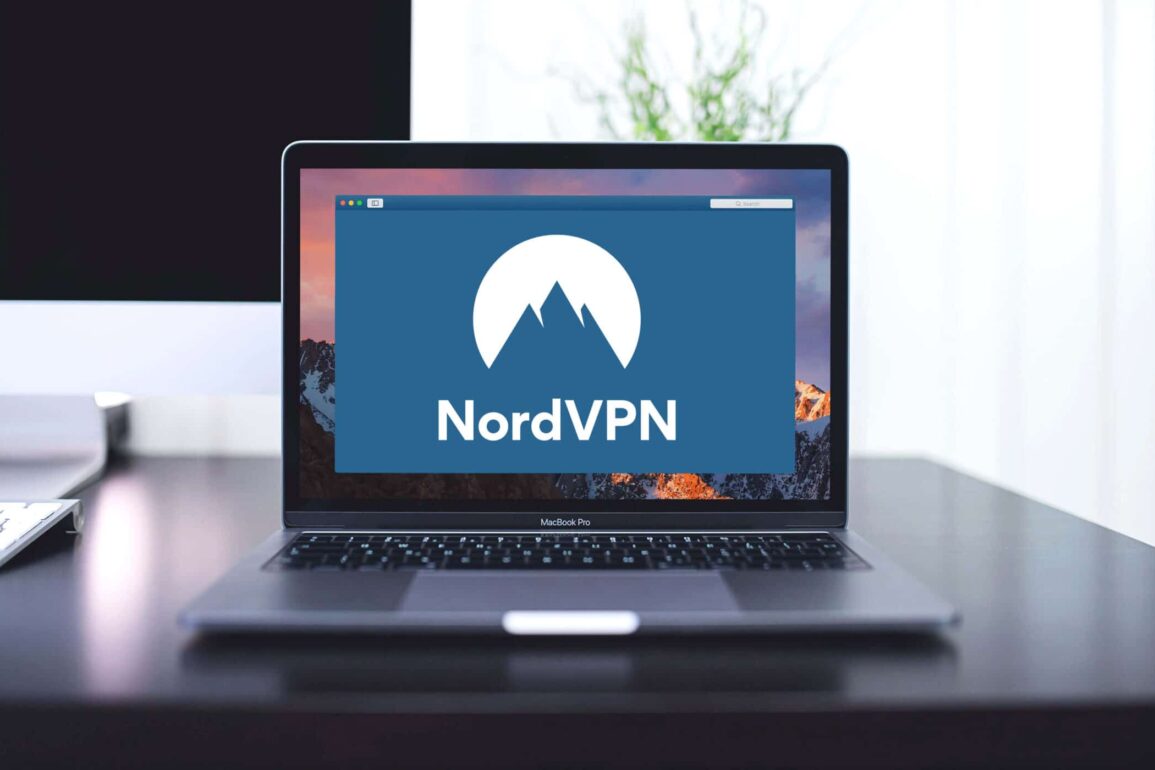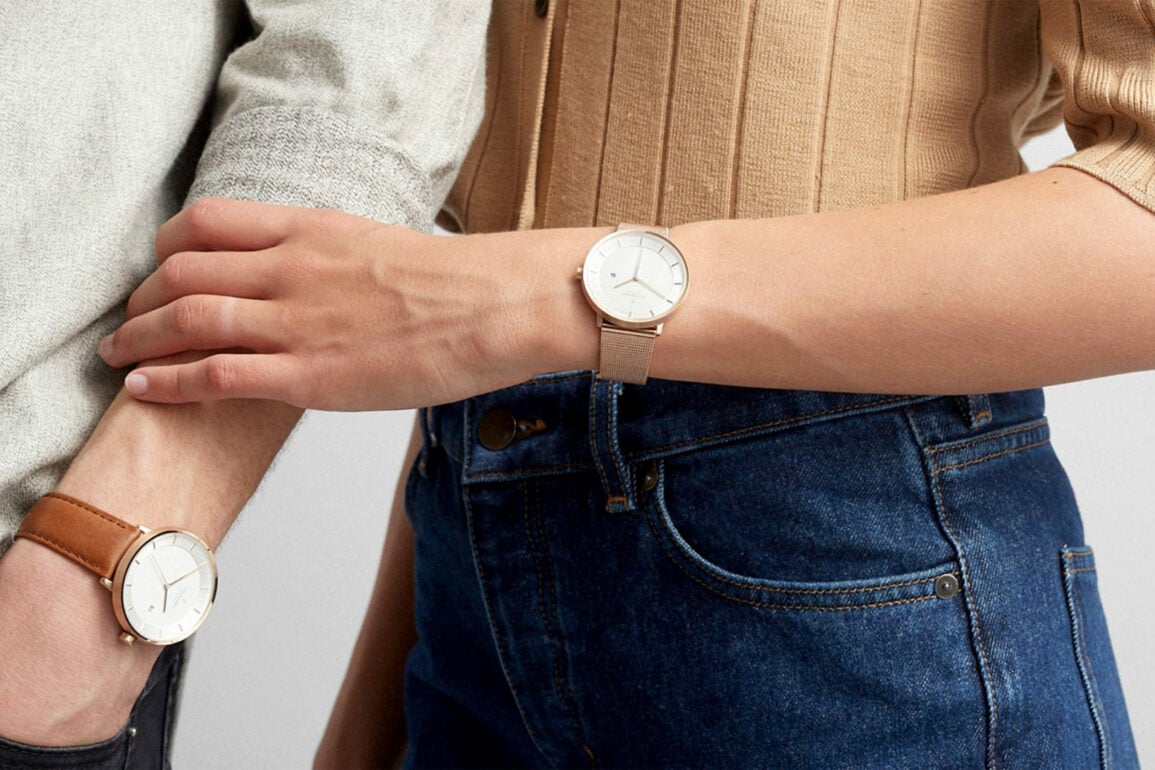Quintessentially British brands: The Virgin experience and how to brand it like Branson
 Credit: Niall Kennedy
Credit: Niall Kennedy
When did you lose your Virgin virginity?
It doesn’t matter whether you’re a frugal saver in search of financial advice, a modern adventurer with an eye for air and rail, or an entertainment enthusiast, the chances are you have some interaction with the Virgin brand in your day-to-day life.
Over almost five decades, the Virgin company name and logo has emerged from relative obscurity, to represent one of the best-known businesses in the world. Unlike many companies, the Virgin Group is one that expands over multiple sectors and industries, focusing on the importance of “customer experience” instead of any single product or service.
Though the Virgin brand was born in the UK, making it an amazing quintessentially British brand, its impact has spread across the globe, and even into the stars above. When it comes to unforgettable branding, Virgin knows what it takes to create a company that’s truly astronomical.
Whether in health, entertainment, travel, or communications, the Virgin brand has earned its place as one of the most desirable, and well-known companies in the universe. By following unshakeable values, proactive customer service, and state of the art solutions, Virgin has been able to capture the hearts of not just a nation, but an entire generation.
So, what’s the story behind the Virgin brand?
What makes this incredible company one of the most iconic groups in the world?
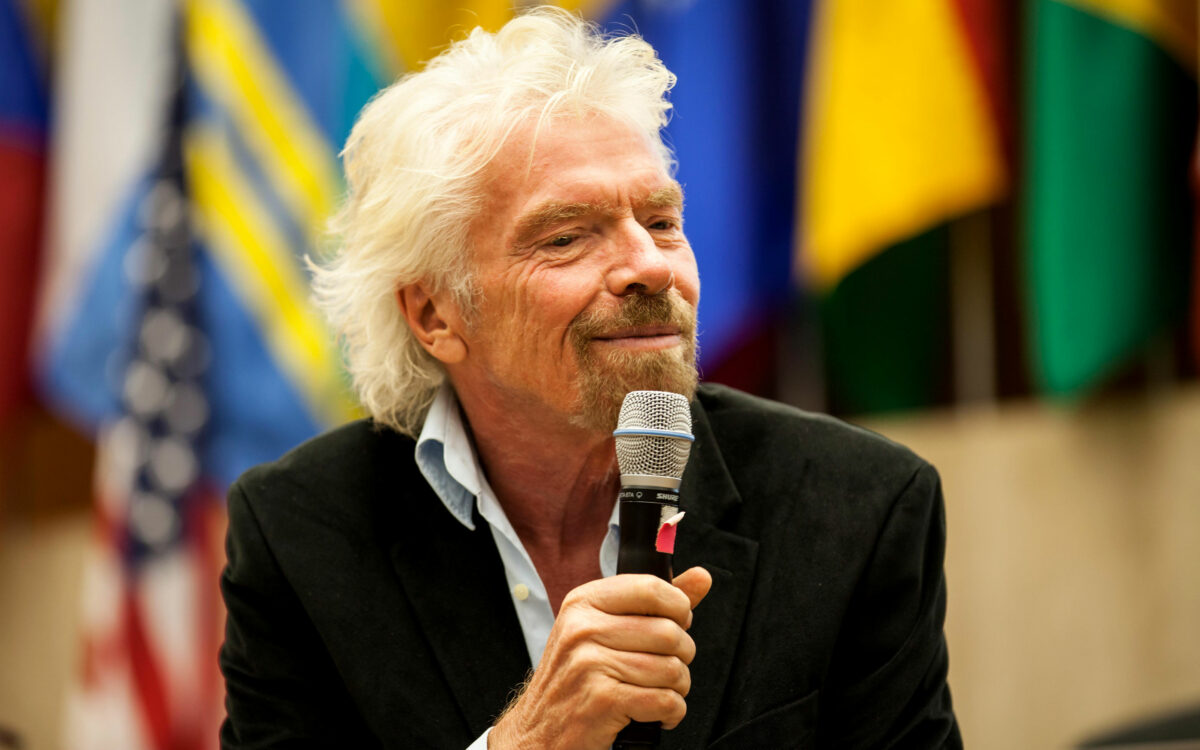
The Virgin brand history: An underdog tale
Today, it’s hard to get a handle on the exact number of companies owned and managed by the Virgin Group. Some people say that even Branson himself can’t say for sure how many businesses he’s affiliated with. However, the Virgin brand hasn’t always been as colossal as it is today.
Richard Branson, the billionaire behind the Virgin brand, started his first business “Student Magazine” after he dropped out of high school at the age of 15. Now, this same enthusiastic entrepreneur oversees approximately 500 companies, with a huge portion of those underneath the “Virgin” name.
In 1970, the Virgin brand began as a retail company selling records by post. The business was almost named “Slipped Disc” – a fun play on words – until a member of Branson’s team, Tessa Watts, noted that they were all “complete virgins” when it came to business. The Virgin Group embraced the idea and started their company with confidence. Unfortunately, in 1971, a postal strike almost put them out of business.
The previously mail-order-only company was forced to open a Virgin Record store in Oxford Street, which was eventually followed by another location in Liverpool. A dozen shops eventually came to life around the UK, and Branson started to think big. With a bank loan, he bought a manor house in Oxfordshire and converted it into the first residential recording studio in the UK.
In his book “Losing my Virginity”, Branson reveals that Simon Draper, his South African cousin, was his right-hand man, and the guy that helped him to launch “Virgin Music” by the end of 1973 – one of the first Virgin brand spin-offs. With their distinctly 70s logo, the organisation emerged as a progressive rock label, connected to musicians like Robert Wyatt. By 1977, the Virgin brand ditched their hippie image, by signing The Sex Pistols – a move that transformed them into the punk, and post-punk label of the era.

Moving beyond music with the Virgin brand
Of course, the Virgin brand strategy didn’t stay within the realms of music forever. In 1984, Branson diversified his business, leasing a 747 jet to fly between Gatwick and New York, and thus designing the first “Virgin Atlantic” airplane. By 2000, the Virgin Group brand had sold 49% of the airline’s holding to “Singapore Airlines” in exchange for some much-needed cash.
In 2005 and 2006, Branson began to assemble the Virgin Media Group that now owns a huge portion of the entertainment industry in the UK, alongside organisations like Sky and BT. The formation of Virgin Media breathed new life into the Virgin brand and helped to underpin its position as the ultimate company for customer experience.
Over the years, Virgin has encountered its fair share of struggles. There were a series of brand problems in the mid-90s, including Virgin Cola, Virgin Brides, Virgin Radio and even Virgin Cosmetics. However, for every spectacular failure in the Virgin brand’s attempt to own the consumer world, there’s been another incredible success.
In 1997, Virgin Trains was launched, and quickly became the most criticised operator on the railways. Yet, despite a shaky start, Virgin Trains are still on the tracks today.
In 1998, Branson created Virgin Mobile, a huge investment success after it was taken over by the NTL group to form Virgin Media in 2006. Today, Branson doesn’t sit on the board for the Virgin Media Company, but he does receive a minimum payment each year of £8.5 million just for letting the Group use the Virgin brand.
In 2004, Virgin Galactic was launched, taking Virgin’s brand awareness strategy to out-of-this-world proportions with an airline designed to fly among the stars. The company has yet to become a “mainstream” contender, but it continues to be an incredible example of what makes the Virgin brand so special.
Ultimately, the Virgin brand is a company created for the people. It’s not afraid to think outside of the box, try new things, and adapt – just like its enigmatic leader, Richard Branson. It’s fair to say that Branson has taken a bit of a haphazard approach to his career since starting his first business in 1966 with more than 400 companies emerging under the Virgin banner. But something about this style of company development has clearly worked.
More than 50 years after the Virgin brand history first began, Branson is still having fun with a business that’s purely customer-centric.

Virgin branding: An incredible global identity
There are plenty of factors that highlight Virgin as a quintessentially British brand. However, perhaps one of the main things that this company does better than most is showcase a personality that truly resonates with, and reinvigorates its customers.
As you may already know from previous Fabrik articles, brand personality is about more than just building an online presence. It’s the essence of your company, the way you make your customers feel with every aspect of your identity, from your signature colours to your straplines, brand mascots, and logo. It’s the distinct look and feel of your product, and the unique tone of voice you use when connecting with your customers.
When every one of the elements above works together in perfect symmetry, you get a personality that makes your brand instantly recognisable, and inherently unforgettable. Few businesses epitomise this concept better than the Virgin brand. The Virgin brand identity is playful, modern, and energetic. Everything about this company, from its advertising, to its website, speaks to the DNA of a truly universal brand.
Perhaps one of the biggest strengths of Virgin’s brand identity is the fact that it’s consistent across every channel and every sub-group within the company’s portfolio. Whether you’re engaging with flight, travel, media, or banking, you get the same unmistakable experience, and that contributes a great deal to the company’s success with brand affinity.
Ultimately, Virgin’s brand voice is built around a desire to serve customers. If you look at the topics covered in the Virgin blog, you’ll find that most topics aren’t focused on selling products or services. This means that Virgin can easily present itself as an authority and thought leader in all the sectors it trades in, without becoming an overly-obnoxious company.
Instead of being “promotional”, the Virgin brand strategy is all about offering value to a huge, global audience. In fact, Virgin even has its own “Disruptors” video series, where it looks at what and who might be changing the industries it plays in.
When you consider the sheer size of the Virgin brand, it’s amazing to think that a business so large has managed to retain its distinctly human elements.
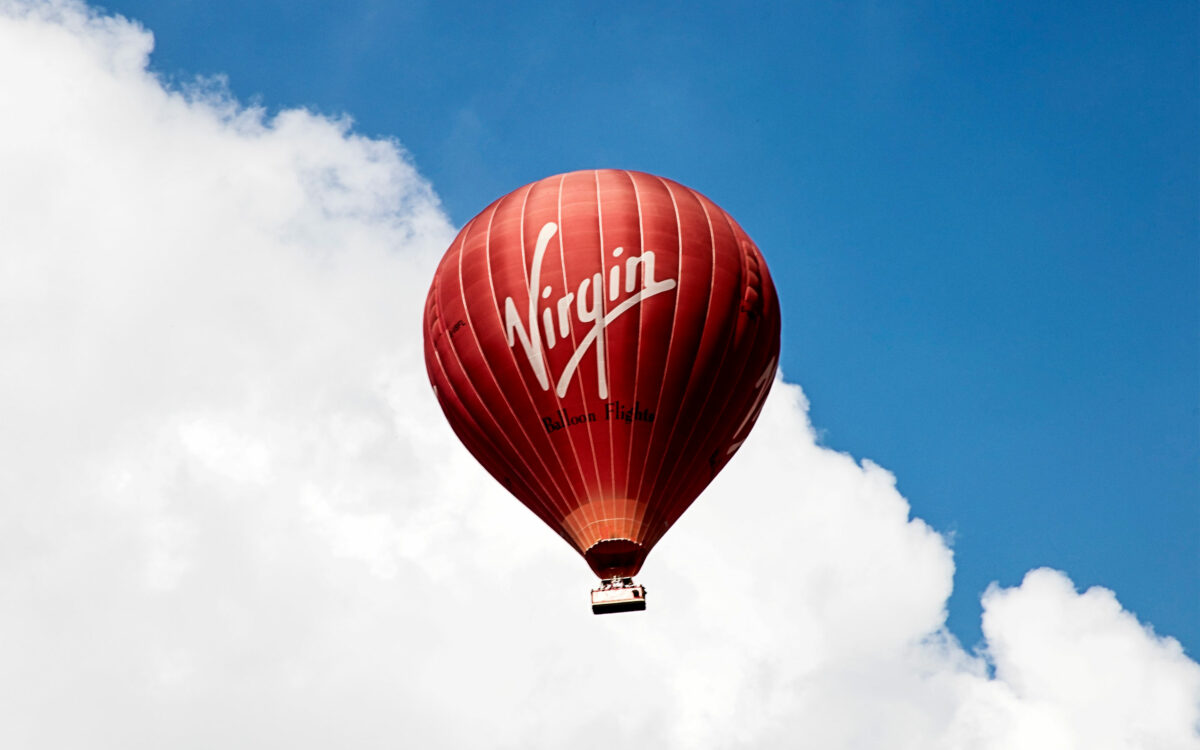
A brief look at the Virgin brand logo
It’s hard to have a full discussion of the Virgin brand guidelines without drawing some attention to the company logo. Today, it’s a scrawl of red text that’s recognised around the world for its impact in countless crucial industries – but the unique handwriting texture is actually a world away from where the Virgin brand logo began.
The modern Virgin logo pulls the mind to thoughts of feminine handwriting, or a number from a girl you met at a bar, written in lipstick on the back of a coaster, but its background begins with something far more complicated. The original “Virgin Records” logo was designed by an illustrator and artist called “Roger Dean”. It looks like something you’d typically see on an album cover by Meatloaf or Iron Maiden, complete with dragons and conjoined twins.

From a branding perspective, the original logo would be a nightmare for any modern company to implement – but it worked for the Virgin brand at the time.
Eventually, of course, the business needed to make a change. It wanted to embrace a more “punk” ethos to coincide with signing the Sex Pistols, and that meant it needed to rebrand and update its image with something more fresh, and urban.
The history of the new Virgin brand logo is somewhat shrouded in mystery. There’s a story floating around in the digital world that the design was simply scribbled onto the back of a napkin one day – though some regard this to be nothing more than an urban myth. Regardless of where the logo came from, it’s seen plenty of refinements throughout the years.
First of all, the company decided to use shocking red in their typography – a choice no-doubt intended to showcase the brand’s passion and grab the attention of its audience at the same time. While the colour has remained the same over the years, the font in the Virgin logo has seen a few careful adaptations, from the original scrawl to a spray-painted version in the 80s, to the current “NASA script” logo.
According to the company, the alterations in the Virgin brand logo represent the organisation’s desire to keep up with changing and emerging trends throughout the years. Yet, the decision to use handwriting instead of any images or graphics is an insight into Virgin’s distinctive identity and the fact it wanted to establish a strong connection with its customers.
The handwritten typography is inherently more personal than any printed font, which represents the company’s desire to be known for its strong consumer relationships. However, the undeniably bold and modern style of the writing demonstrates Virgin’s approach to an ever-changing, ever-disruptive company, willing to dive into almost any market.
Virgin marketing tactics: From TV to social media
Perhaps one of the things that make the Virgin Group brand so appealing, is the fact that it has such strong connections with its customers. It might not be Coca-Cola, with a tie to the festive season, or Disney, with its world-changing marketing, but it’s still charming enough to capture the hearts and minds of its audience.
You might think that the early mistakes the company made with things like “Virgin Brides” would set the organisation off on the wrong track. However, the truth is that it has done the opposite. Now that Richard Branson has set the tone for failure being “okay”, Virgin’s marketing team knows that it’s alright to experiment with being out of the ordinary.
In fact, that’s something the company draws particular attention to with its advertising campaign “Fly in the Face of Ordinary”, which was launched in 2012.
Today, Virgin’s marketing tactics focus more on the digital world, than television adverts and billboards, though you’re still likely to see some conventional Virgin advertising from time-to-time. This seems like a pretty solid strategy when you consider the Virgin brand identity and the concept that this is a brand designed inherently for customers.
According to the social media manager for the Virgin branding team, Jill Fletcher, the company has one of the highest growth rates of all time on Facebook and Twitter for their airline alone. Regardless of where you go to interact with Virgin on a social level, you should expect to see some incredible customer service, all delivered with the same tone of voice, the same image, and the same unique personality we’ve come to know and love.
Wondering how Virgin make the most of their social media campaigns? Here’s a rundown of the brand guidelines they use for their online presence.
1. Be active
Everyone in the company, from the average customer service representative to Richard Branson himself, knows how to be active on social media. It’s basically an essential part of the company’s internal fabric. In fact, Richard Branson is well-known for tweeting and blogging on an almost constant basis.
2. Know how to listen
As most successful brands know, running a successful social media marketing strategy isn’t about finding ways to constantly sell to your audience. It’s about interacting with your customers, taking part in conversations, and delivering value in everything that you produce. All the Virgin brand channels know how to serve their audience with useful links, tips, and customer feedback.
3. Respond to your customers
Social media is a great way to give depth to your customer service strategy, and companies as big as Virgin need all the help they can get when it comes to keeping their brand name’s reputation intact. Virgin Media currently uses a social media dashboard to help link external and internal networks in a single place, ensuring that the company can respond to trends in its industry, and customer needs too.
In any business, innovation and energy can be the key to success. Virgin’s branding team has learned how to embrace these concepts, alongside a solid understanding of its audience, to give customers an experience they’ll never forget.

How brands become icons: Why we still love Virgin (despite its flops)
Coca-Cola, Google, Marks and Spencer, Virgin…
The list of iconic brands that exist around the world today isn’t large. The number of quintessentially British brands that earn the title of “industry icon” is even smaller.
While you might be able to reel off countless names when we ask you to think of a memorable company, the truth is that the grand total is pretty small when you consider all the millions of businesses out there that have never been able to pull themselves out of obscurity.
The question is, what makes certain brands so memorable? Why is the Virgin brand something that has become ingrained in our experience of the world?
Perhaps the easy answer is that it’s a unique type of “lifestyle” brand. A lifestyle brand is a brand with purpose, a company that knows how to immerse itself in the daily activities of its customers. Brands like Virgin don’t come into the marketplace to offer something new, they enter the world with an intent to change everything we thought we knew about a certain sector or idea.
Thanks to visionary leaders like Richard Branson, lifestyle companies like Virgin fundamentally impact everything we do as a community, from the way that we save money, to the way that we enjoy entertainment, or connect with our friends.
So, what can we learn from a lifestyle brand like Virgin?
1. Always research your market
Ultimately, though the Virgin branding team has come up with countless potential ideas for amazing sub-brands – only some of those concepts have been successful. While there’s nothing wrong with having high ambitions for your company, there’s a good chance that you’re not going to be able to own every sector, and every product.
Virgin Brides just wasn’t right for the kind of personality that the company had already built. They didn’t think the business model through well enough, and the Virgin branding team forgot to centre their focus on a distinct user persona. On the other hand, evolving a music brand into a company that shares media and entertainment with the world seems like more of a natural progression.
2. Know how to differentiate
If you want to become a global company like the Virgin brand, then you need to know how to make your company stand out. Virgin’s ultimate brand promise, is that it offers customers impeccable experiences, regardless of which sector it is servicing. By focusing entirely on its audience, Virgin has been able to generate a unique identity and character that truly makes the company shine.
In the spirit of Branson himself, Virgin promises that whatever it does, and wherever it is, it will always be challenging, innovative, and adventurous. So, how does it do that? By never resting on its laurels. After Virgin Atlantic emerged as a success, the brand chose to take the idea of travel even further with the otherworldly concept of Virgin Galactic. Virgin shows us that there’s truly no limit to what any business can accomplish.
3. Build your strategy with the times
Finally, Virgin’s branding strategy hasn’t remained the same from the 1970s when it first emerged, all the way through to today. To bring customers into their store during the 1990s, Virgin relied on headlines in papers and foot traffic, along with ads in lifestyle magazines.
Today, Virgin has expanded to much greater heights. While it still dabbles in television advertisements and direct mail, the brand has also embraced social media in gigantic proportions, and has even started to play around with some experiential campaigns too.
Ultimately, Virgin teaches us that no matter what industry you’re in, you need to be willing to adapt to the times if you’re wanting to live forever.
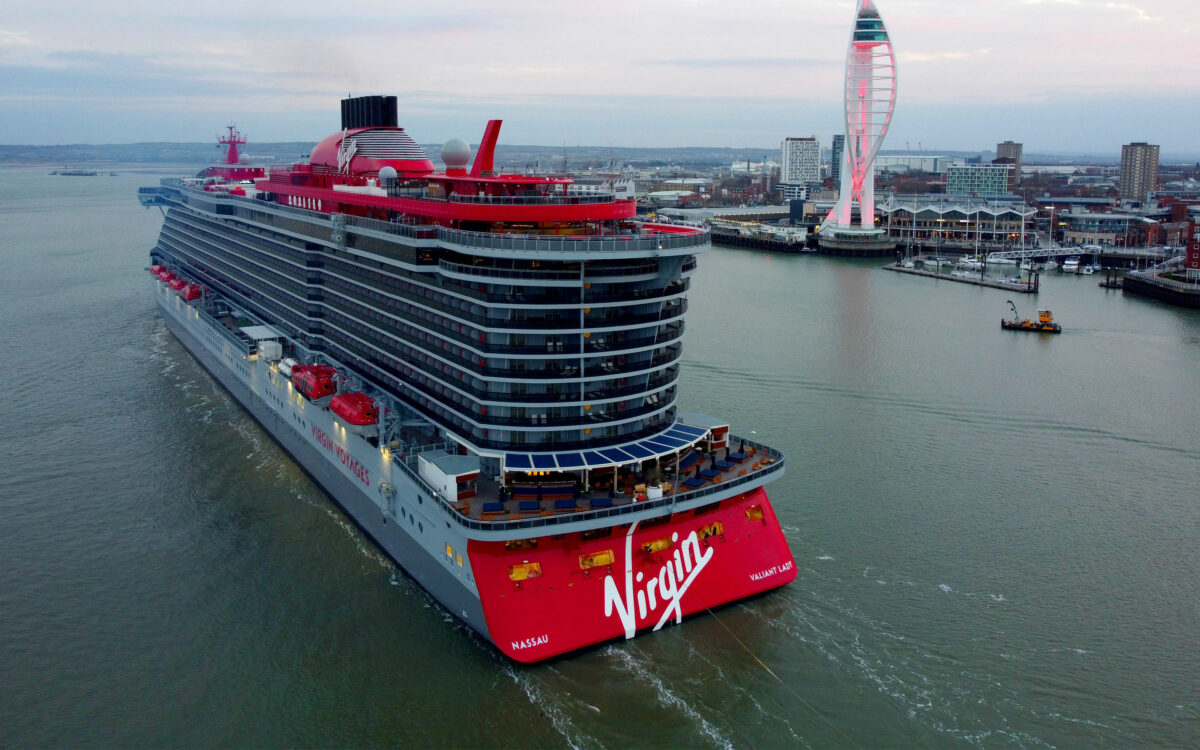
Building a brand on momentum: The Virgin experience
The Virgin brand has seen spectacular growth over the years.
Though not all of its ventures have been successful, the company does its best to deliver a consistent experience of exceptional customer service in everything it does – and that’s just one of the things that makes it such a successful quintessentially British brand.
The Virgin branding team has built a global company by looking for ways to engage and inspire customers in almost every sector, refining its approach along the way.
It hasn’t been an easy ride to the top for Virgin, and in the early days, some critics felt that the diverse portfolio of the Virgin Group would make it impossible for the company to focus on a single, primary mission. However, it seems that with nearly 5 decades of success under its belt, Virgin has responded perfectly to the pressure that comes with diversity.
No matter where the business branches out, the brand remains aware of its fundamental goals, and the aim to make a difference in people’s lives. For Virgin, the answer to great branding isn’t just in playing the game well, but changing the game forever.
If you enjoyed this article, you might enjoy these too:
— Knowing me, knowing you: Introducing brand Sweden
— Exploring vintage values with Roberts Radio







